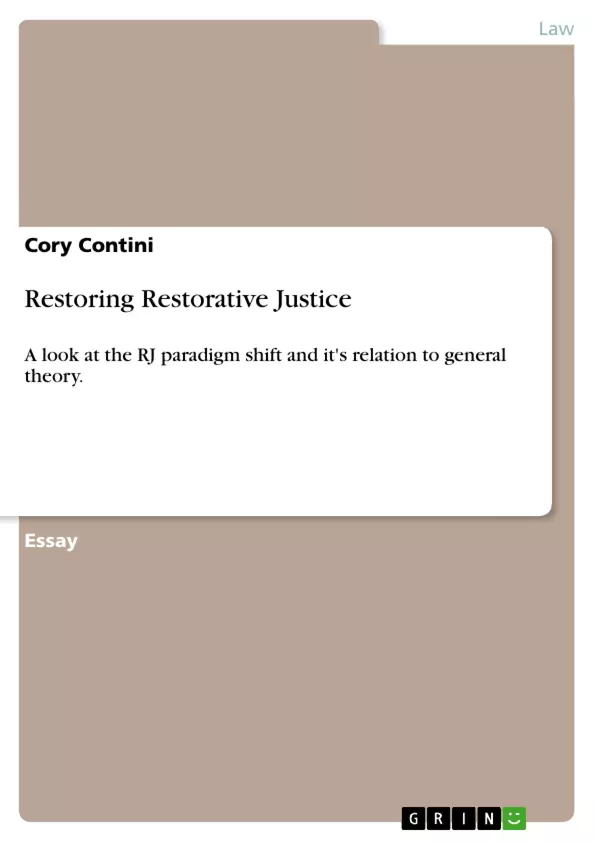Governed by a retributive paradigm, the contemporary criminal justice system was designed in the image of a colonial institution from the past. Archaic, arbitrary, and racist among other things, this colonial legacy within politics and crime control has allowed governments to dictate the flow and actions of minority populations behind the veil of the system. Many scholars have identified this and are pushing for transformation and reform. Victims’ rights champion Robert Elias (1993) states that the “movement can develop a more independent path that is freer from government dominance and control” (p. 65). Ultimately, the state is rarely a first-party victim and should therefore be relegated to the background. The true parties affected in conflict deserve the control and authority to resolve the problem how they see fit.
A preferred emerging model is the restorative justice process. Restorative justice is part of a larger social movement as it works in collaboration with Alternative Dispute Resolution models and proponents of conflict prevention/resolutions. This restoration system is based on cooperative and constructive inputs from all parties involved in the conflict. This includes offender, victims, family members, spouses, members of the community and any other stakeholders. The community has the responsibility of overseeing specific conflict resolutions and ensuring all parties are served proper justice. There are many benefits with this type of system such as bringing back the conflict to where it occurred in the first place and solving it there with the key stakeholders as primary participants. This returns justice to where it belongs: in the community with the people affected in the matter. Furthermore, human beings are so diverse and every problem complex in its own ways that no single apparatus or mechanism can solve all problems equally. This is why the more local and responsive restorative justice model is being pushed by academics. It is more adaptive than the retributive system and allows for more compassion and healing.
Inhaltsverzeichnis (Table of Contents)
- Restoring Restorative Justice
- Introduction
- Restorative Justice: An Emerging Model
- Challenges to Restorative Justice
- Theories of Restorative Justice
- Restorative Justice: A Vision for the Future
Zielsetzung und Themenschwerpunkte (Objectives and Key Themes)
This paper argues for a transformative shift in the criminal justice system from a retributive to a restorative justice paradigm. The aim is to move away from the traditional, colonial system that perpetuates inequity and toward a more community-based approach that prioritizes healing and accountability.
- The limitations of the traditional, retributive criminal justice system
- The emergence of restorative justice as a more humane and effective alternative
- The practical challenges of implementing restorative justice
- Theoretical frameworks that underpin the restorative justice movement
- A vision for a future criminal justice system based on restorative principles
Zusammenfassung der Kapitel (Chapter Summaries)
This paper explores the concept of restorative justice as an alternative to the traditional criminal justice system, highlighting the systemic inequalities embedded within the current system and the need for a more inclusive and just approach. It delves into the practical and theoretical challenges of implementing restorative justice, including the role of victims and offenders in the process.
Schlüsselwörter (Keywords)
Restorative justice, criminal justice system, retributive justice, restorative justice movement, colonial legacy, equity, community-based justice, victim rights, offender rehabilitation, systemic barriers, institutional bias, social control, net-widening, net-reducing, restorative justice model, Kunisawa's Designs of Omission, Thomas Mathiesen's framework of "the unfinished", shame, stigmatization, alternative dispute resolution.
- Quote paper
- Cory Contini (Author), 2012, Restoring Restorative Justice, Munich, GRIN Verlag, https://www.grin.com/document/230471



